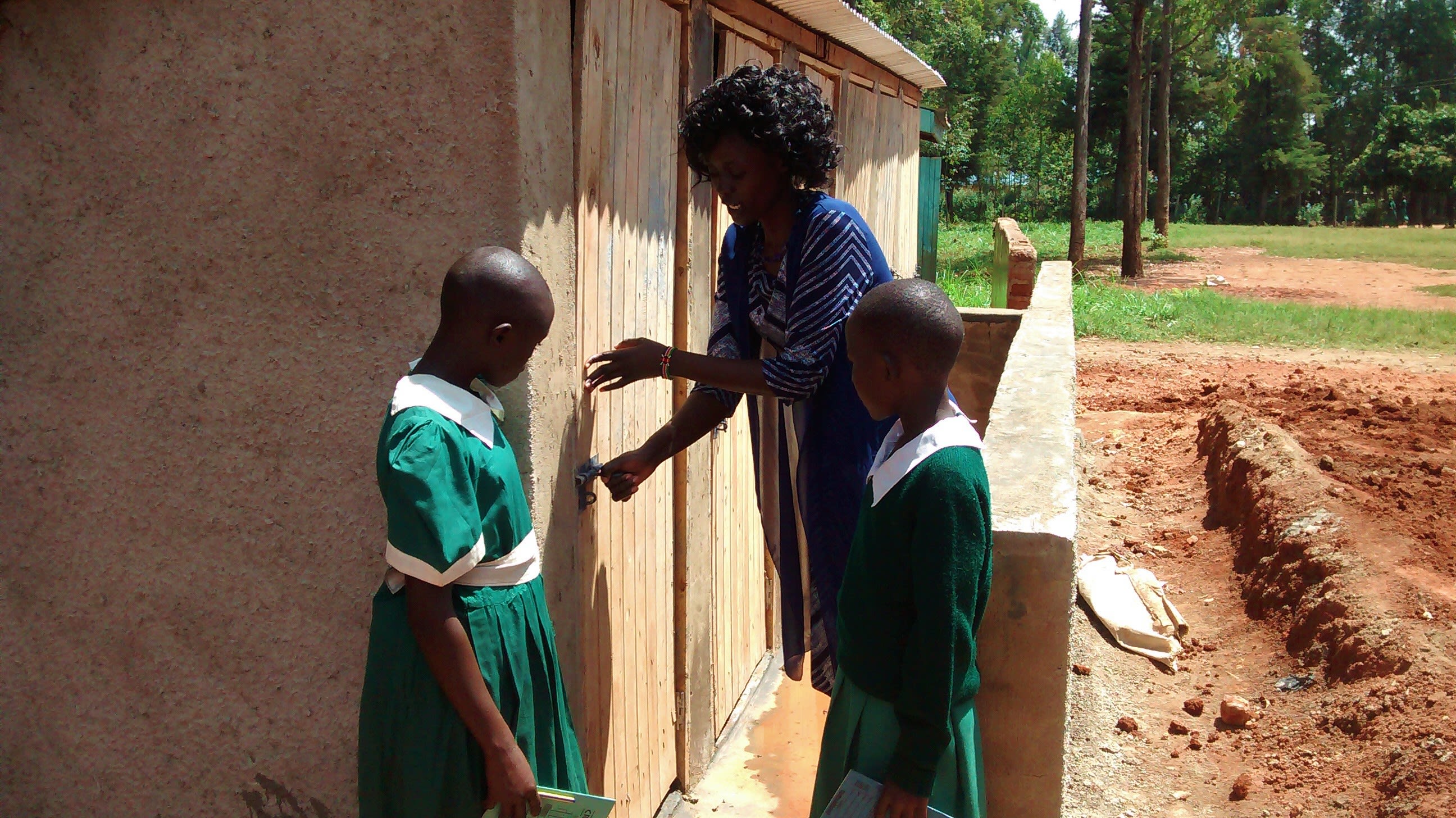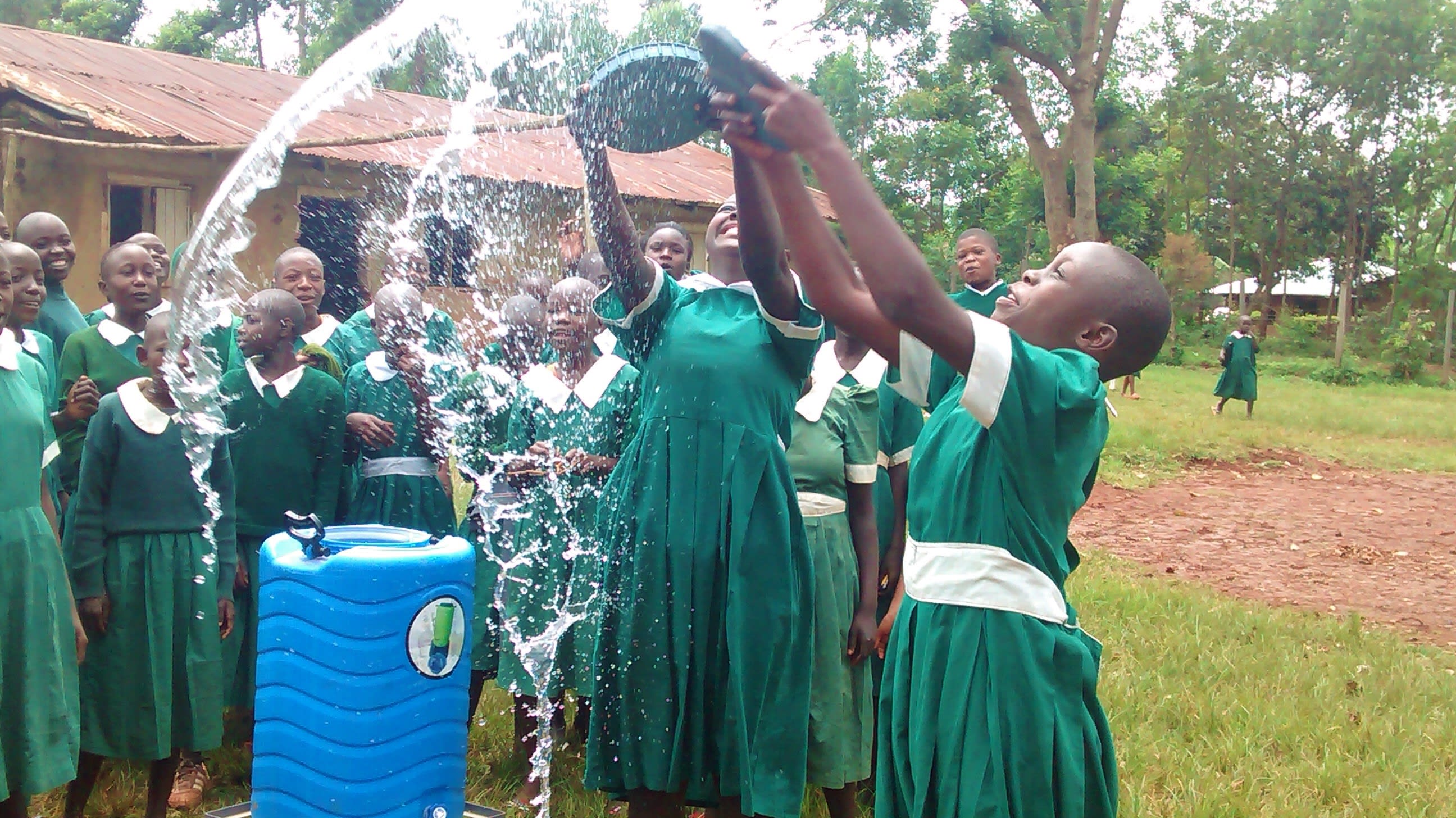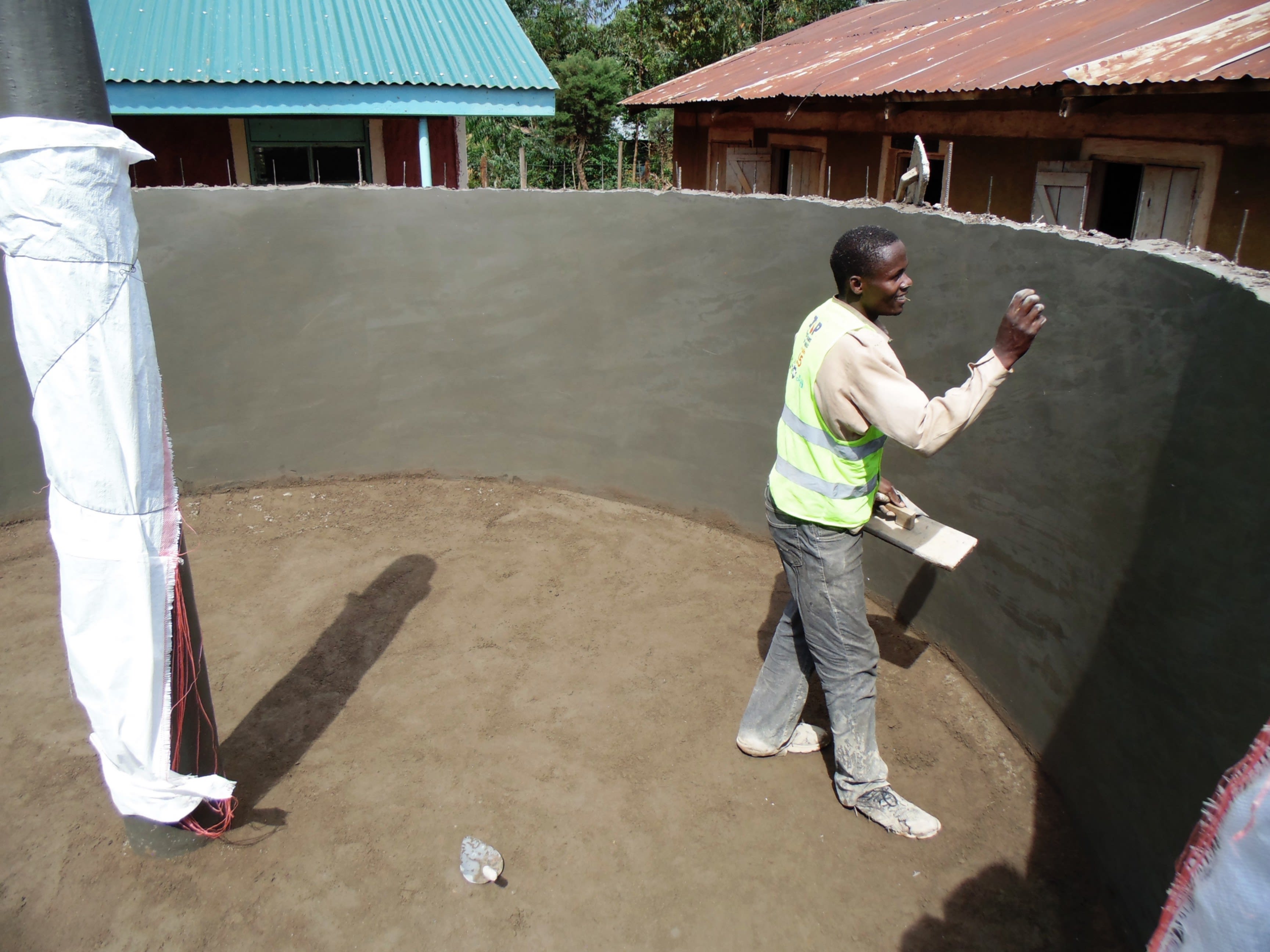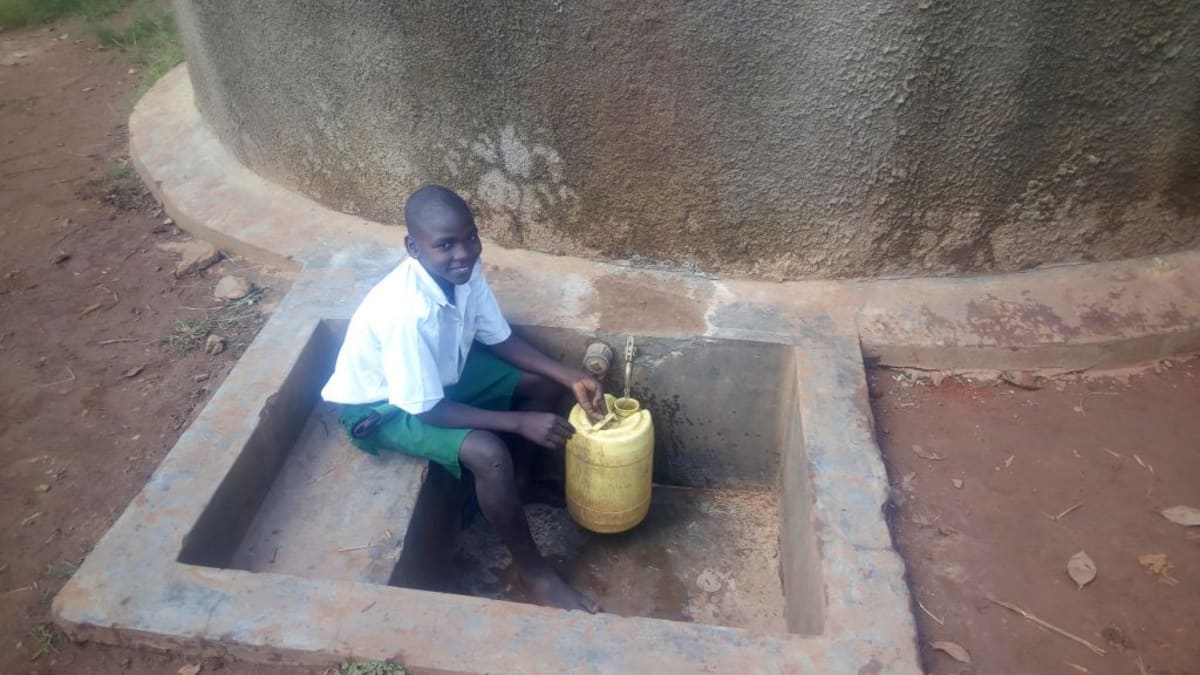This project is a part of our shared program with Western Water And Sanitation Forum (WEWASAFO). Our team is pleased to directly share the below report (edited for clarity, as needed).
Welcome to the School
Bordered by Ikolomani to the west and Sabatia to the east, Emuhaya is home to Emurembe Primary School. People say this is the only area in the entirety of Vhiga County where people still have a considerable amount of land. It is commonly known as ‘the scheme’ since many people from as far as central Kakamega still come here to lease land. However, the natives do not properly utilize this precious gift: almost every family leases land to outsiders who grow crops and compete the locals. The good harvests of those leasing the adjacent land drives locals deeper into poverty. These locals are sacrificing lifetime benefits for immediate gains.
"Money got by men after leasing land is wasted in the local brew dens where men spend most of their times drinking themselves silly," to quote the school BOM (Board of Management) chairperson verbatim. This entire Emurembe location, especially Ebunyonje Village where this school is built, is known for illicit alcohol. The rate of alcoholism is so high that it is thought to be a real curse on the people.
Women have thus taken up the leadership position in their families. They pick tea and till the land leased to foreigners in order to support their families.
The BOM chair believes that this school can perform better if the government, through the cabinet secretary for education, stops being so strict on teachers. According to him, the government is soft on children and hard on teachers, and in the end it is the children who suffer for it.
He believes that pupils should have holiday and weekend tuition to boost their performance, but the government doesn’t allow it. He also believes that children should join grade one when they are at least six years old, but the government says that any child who passes the ECD (early education) examination should join standard one. Chairman Arthur complains that some children join class one when they are just three years old, posing a challenge to teachers. Most of these children have low concentration spans and cannot sit in class for long hours. They sleep on their desks during lessons and teachers are forced to toilet train them, which is work that should be done at home by their parents.
Of all the schools we’ve been to, this one has the most active BOM chair, Mr. Arthur Esiakhunye, who lives just a stone's throw from the school compound. He visits the school on a daily basis to understand everything going on. He can clearly explain the school timetable and elaborate how each teacher does their work. He knows those who work hard with a passion to help children and transform the community, and he also knows the teachers who are just there to earn their salary. "Whenever I come here, every class must have a teacher, if any is missing a teacher I have to inquire and understand why," he explained. Being a former teacher who taught at Emurembe for 24 years, Mr. Esiakhunye understands how everything should run in a learning institution. The passion with which he describes the daily activities and his desire to change his community through quality education is amazing. He has been here since the inception of the school in 1972 when it had only three classes. He has since grown with this institution, sharing its successes and failures throughout the years.
It now has a student enrollment of 600. (Editor's Note: While this many people may have access on any given day, realistically a single water source can only support a population of 350-500 people. This community would be a good candidate for a second project in the future so adequate water is available. To learn more, click here.)
Water Situation
The Salvation Army Church sponsors this institution, and has donated a 5,000-liter plastic tank that can only serve a population of 617 for a short time. A team was called to drill a borehole, but they gave up after reaching 70 feet without water.
The school has tried to minimize the amount of time spent on roads by children by asking them to come to school with water every morning and when they return after lunch. Even so, pupils must still be sent out to Wamianda Spring to fetch more water when there are shortages. This source is deep inside a valley that is a tiresome, long walk for students. "We desire our performance to increase, but it is very hard for that to happen if our children still go out of class to fetch water from that spring that is far from the school," the Deputy Headteacher Jeremiah explained. Pupils fight over water and sometimes come back complaining that villagers have beaten them, and the deputy assumes it is because locals scramble for water with the community. Water brought to school is kept under a tree in the same containers used for fetching. These containers have no covers, exposing the water to all kinds of germs. Children also dip their fingers in the containers as they carry them from the spring, and some were seen drinking water with their mouths directly from those containers. In short, there is very poor handling of water in this school.
The chairman said, "We tell our pupils to come with containers that have covers but they say their parents can’t afford the ones with cover leads and we can’t punish them for failing to come with the leads: that will be so unfair."
There is an interesting story of Flavian, a girl who received a thorough beating from her mother at home because the container she used to carry water got lost. With the teachers’ permission, this little girl carries her jerrycan wherever she goes within the school compound so as to avoid trouble at home.
Sanitation Situation
The school has six doors of pit latrines set aside for 310 boys. Girls had 10 doors, but four of them were so old that they sank in May of 2016. A child almost died inside, but was rescued in time.
Those latrines have since been closed with nobody allowed to use them. Therefore, 290 girls share the remaining six doors. 14 teachers together with two watchmen and one cook have one latrine door for each gender that were donated. Malaria and diarrheal diseases are very common in this school and it is normally very hard to get quick medication. The nearest health facilities are in the interior of Ikolomani, Sabatia or Luanda sub-counties, and many people have died of cases that would have been easily treatable. There is no compost pit in this institution, so garbage is disposed of on bare ground next to the school farm. The chairperson said that even though they have tried to clean classrooms and latrines daily, hygiene is very poor in this village. He says that women are the best to be taught because they will listen and implement, unlike men who have always failed to attend or walked out of important meetings. Chairman Arthur said, "We have tried to maintain good hygiene standards but our children get hygiene-related diseases from home then come here and spread to the rest. I’m so happy that parents will attend the training, they need to be taught," he explained.
Plans: Hygiene and Sanitation Training and Hand-Washing Stations
Training will be held for two days. The facilitator will use PHAST (participatory hygiene and sanitation transformation), ABCD (asset-based community development), CTC (child to child), lectures, group discussions, and handouts to teach health topics and ways to promote good practices within the school. The CTC method will prepare students to lead other students into healthy habits, as well as kickstart a CTC club for the school. This CTC club will oversee the new facilities, such as hand-washing stations, and make sure they are kept clean and in working condition. The two hand-washing stations will be delivered to the school, and the club will fill them with water on a daily basis and make sure there is always a cleaning agent such as soap or ash.
Plans: VIP Latrines
Two triple-door latrines will be constructed with local materials that the school will help gather. Three doors will serve the girls while the other three serve the boys. And with a new source of water on school grounds, students and staff should have enough to keep these new latrines clean.
Plans: Rainwater Catchment Tank
A 50,000-liter rainwater catchment tank will help alleviate the water crisis at this school. The school will also help gather the needed materials such as sand, rocks, and water from the spring for mixing cement. Once finished, this tank can begin catching rainfall that will be used by the school’s students and staff. Students will no longer have to leave their school in search of water.
We and the school strongly believe that with this assistance, standards will significantly improve. These higher standards will translate to better academic performance!

 Rainwater Catchment
Rainwater Catchment
 Rehabilitation Project
Rehabilitation Project

































